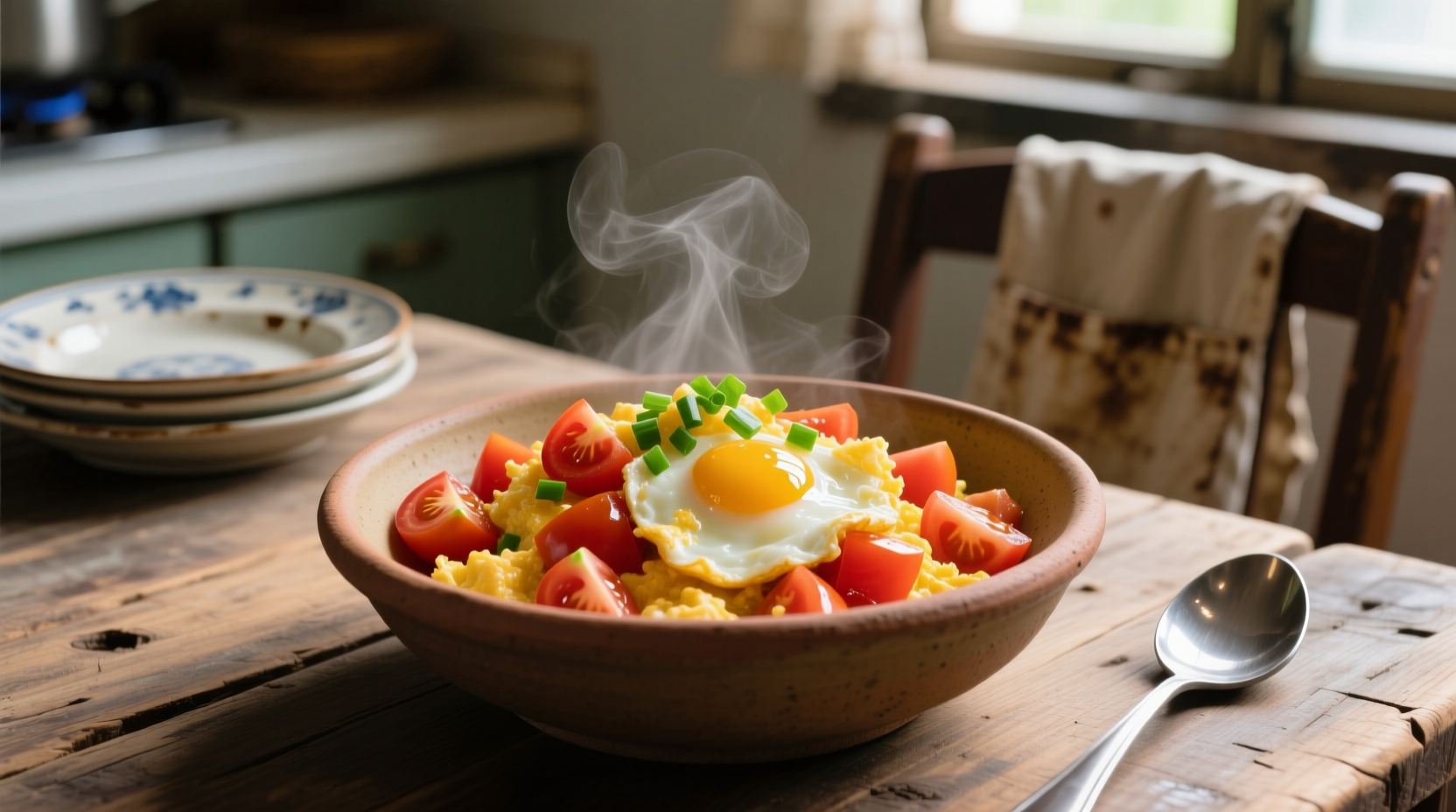The Universal Appeal of Egg and Tomato Combinations
Egg and tomato dishes represent one of the most universally beloved food pairings worldwide. This culinary marriage works because tomatoes' natural acidity cuts through the richness of eggs, while eggs provide a creamy texture that balances tomatoes' juiciness. Food scientists confirm this pairing creates umami synergy - the glutamic acid in tomatoes interacts with the inosinic acid in eggs to produce a more intense savory flavor than either ingredient alone.
According to culinary anthropologists at the University of Gastronomic Sciences, this combination emerged independently across multiple cultures due to ingredient availability and complementary nutritional profiles. The dish provides complete protein, vitamin C, lycopene, and essential fatty acids - making it nutritionally balanced despite its simplicity.
Essential Ingredients Breakdown
While seemingly basic, selecting the right ingredients makes all the difference between an ordinary and extraordinary egg and tomato dish. Here's what matters:
| Tomato Variety | Best For | Flavor Profile | Moisture Content |
|---|---|---|---|
| Roma | Stir-fries, scrambled eggs | Bright, slightly sweet | Medium (less watery) |
| Beefsteak | Omelets, frittatas | Rich, complex | High (requires draining) |
| Cherry | Quick dishes, garnishes | Sweet, concentrated | Low |
For eggs, freshness matters more than size. Fresh eggs have thicker whites that hold shape better during cooking. The USDA confirms that eggs less than 7 days old produce superior texture in cooked dishes compared to older eggs (USDA Food Safety and Inspection Service).
Step-by-Step Cooking Process
Follow these professional techniques for perfect results every time:
Preparation Sequence
- Tomato treatment: Score tomatoes with an "X" at the bottom, blanch in boiling water for 30 seconds, then transfer to ice water. This loosens skins for easy removal if desired. Remove excess seeds and gel to prevent sogginess.
- Egg technique: Whisk eggs with 1 teaspoon water per egg (not milk) for fluffier texture. Season with salt after whisking to prevent toughness.
- Heat management: Use medium heat throughout - too high creates rubbery eggs, too low makes them watery.
Cooking Timeline
The precise timing makes all the difference:
- 0-3 minutes: Sauté tomatoes with garlic until softened but still holding shape
- 3-5 minutes: Add seasonings (sugar balances acidity, soy sauce adds depth)
- 5-7 minutes: Pour in eggs, let set slightly at edges before gently folding
- 7-9 minutes: Remove from heat when eggs are 90% set (residual heat finishes cooking)

Avoiding Common Mistakes
Even experienced cooks make these errors with egg and tomato dishes:
Waterlogged Texture
Tomatoes release significant liquid during cooking. To prevent a soupy dish:
- Salt tomatoes 10 minutes before cooking and drain excess liquid
- Cook tomatoes first until most liquid evaporates
- Avoid adding wet ingredients like fresh herbs too early
Egg Texture Problems
For perfectly textured eggs:
- Never overbeat eggs before cooking - just until yolks and whites are incorporated
- Remove from heat before eggs appear fully cooked
- Avoid stirring too frequently - let eggs set slightly between folds
Global Variations Worth Trying
This simple combination transforms across cultures:
Chinese Scrambled Eggs with Tomatoes
The most famous version features slightly sweet tomatoes with tender scrambled eggs. Key differences:
- Eggs cooked first, removed, then added back with tomatoes
- Slight sugar addition balances tomato acidity
- Light soy sauce and sesame oil for finishing
Spanish Tortilla
A thicker, set version where tomatoes are incorporated into the egg mixture:
- Tomatoes drained thoroughly before mixing with eggs
- Cooked slowly with frequent flipping
- Served at room temperature
Shakshuka
Middle Eastern preparation with spiced tomato sauce:
- Tomatoes cooked down with cumin, paprika, and chili
- Eggs poached directly in the sauce
- Finished with fresh herbs and feta cheese
When to Choose Which Technique
Understanding context boundaries helps you select the right approach:
- Quick weeknight meal: Chinese-style scrambled version (ready in 12 minutes)
- Brunch entertaining: Spanish tortilla (can be made ahead)
- Spicy flavor preference: Shakshuka method with harissa
- Low-sodium diet: Omit soy sauce, use fresh herbs for flavor
Food safety experts at the FDA recommend consuming egg and tomato dishes within 2 hours at room temperature or refrigerating promptly (FDA Food Code).
Nutritional Benefits
This simple dish packs impressive nutrition:
- Lycopene boost: Cooking tomatoes with oil increases lycopene absorption by 4x
- Complete protein: Eggs provide all 9 essential amino acids
- Vitamin synergy: Vitamin C in tomatoes enhances iron absorption from eggs
Nutrition researchers at Harvard T.H. Chan School of Public Health confirm that moderate egg consumption (up to one daily) shows no increased cardiovascular risk for most people (Harvard Nutrition Source).
Pro Tips for Perfect Results
- Add a pinch of baking soda to tomatoes while cooking to preserve bright red color
- Use cast iron or carbon steel wok for authentic Chinese-style texture
- Finish with a splash of Shaoxing wine for depth (alcohol cooks off)
- Let eggs rest 5 minutes after cooking for more even texture
Frequently Asked Questions
Can I make egg and tomato dish ahead of time?
While best fresh, you can prepare components separately. Store cooked tomatoes and whisked eggs in separate containers. Combine and finish cooking when ready to serve for optimal texture.
Why do my eggs turn green when cooking with tomatoes?
This harmless reaction occurs when eggs' sulfur compounds meet tomatoes' acidity. To prevent it, cook tomatoes first until liquid reduces, then add eggs. The green tint disappears as the dish cools.
How can I make this dish without onions or garlic?
Substitute with 1/4 teaspoon asafoetida (hing) for savory depth, or use celery or fennel for aromatic complexity without alliums.
What's the best oil for authentic Chinese egg and tomato?
Traditionally, Chinese cooks use soybean or peanut oil. For home cooking, a neutral oil with high smoke point like avocado oil works well while maintaining authentic flavor profile.











 浙公网安备
33010002000092号
浙公网安备
33010002000092号 浙B2-20120091-4
浙B2-20120091-4